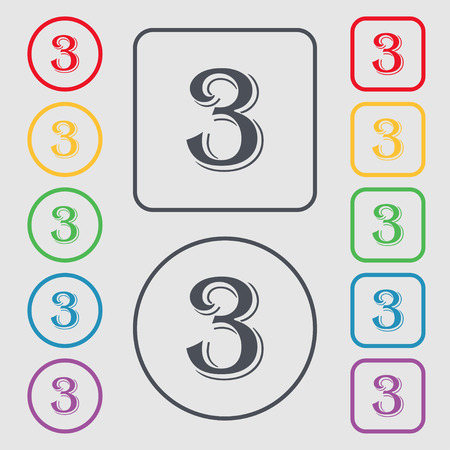Introduction to Life Path Numbers and Family Dynamics
In the rich tapestry of American families, each individual brings their own story, strengths, and sensitivities. But have you ever wondered if there’s a deeper thread weaving your family together? That’s where Life Path Numbers come in. Rooted in numerology, these numbers are derived from your birth date and reveal the unique vibrations that shape your destiny. In the U.S., where family structures are as diverse as the nation itself—blended households, single-parent homes, traditional nuclear families—understanding these energetic blueprints can provide profound insights into how we relate to one another. Exploring Life Path Numbers isn’t just about self-discovery; it’s about recognizing the unseen forces influencing communication styles, emotional needs, and even generational patterns within American families. By shining a light on these hidden dynamics, we gain clarity on our roles, challenges, and the soulful connections that help us grow together.
2. The American Family Structure: Diversity and Evolution
When interpreting family dynamics in the U.S. through the lens of Life Path Numbers, its important to first appreciate the rich diversity and evolution of American family structures. No longer limited to the classic image of a nuclear family, American households today represent a vibrant tapestry of relationships and arrangements—each offering unique lessons and energies that can be explored with numerology.
Understanding Family Types in the U.S.
The modern American family can take many forms, each with its own dynamic flow and challenges. This diversity offers fertile ground for Life Path Number insights, helping individuals understand not only their personal roles but also the collective destiny of their family group. Heres a look at some common family types:
| Family Type | Description | Potential Life Path Themes |
|---|---|---|
| Nuclear Family | Two parents and their children living together | Harmony, structure, tradition, shared purpose |
| Blended Family | Parents with children from previous relationships forming a new unit | Adaptation, integration, new beginnings, compromise |
| Single-Parent Family | One parent raising children alone | Resilience, independence, resourcefulness, strong bonds |
| Chosen Family | Close-knit group of friends or relatives chosen for support and love | Loyalty, acceptance, emotional healing, unconventional paths |
The Impact of Cultural Evolution on Family Energy
The evolution of these family structures is deeply influenced by cultural shifts such as increasing acceptance of LGBTQ+ families, interracial marriages, and cohabitation without marriage. Each arrangement brings its own energy signatures that interact uniquely with individual Life Path Numbers—inviting both challenges and opportunities for growth.
Navigating Your Unique Family Destiny
By understanding your familys unique structure alongside your Life Path Numbers, you can begin to see patterns emerge—patterns that reveal why certain dynamics repeat, where healing is needed, and how each member’s destiny weaves into the larger story. Embracing this diversity is not just an act of compassion; it’s a powerful step toward deeper connection and mutual transformation within your American family experience.
![]()
3. How Life Path Numbers Shape Roles in American Households
In the tapestry of American family life, each member brings a unique energy to the table—often influenced by their Life Path Number. This number can be a gentle guide, illuminating how we communicate, nurture, and support one another in our homes. Understanding these patterns opens space for healing and deeper connection within U.S. households.
Life Path 1: The Natural Leader
Individuals with a Life Path Number 1 often step into leadership roles, taking initiative whether it’s planning family trips or making important decisions. In the American context, where independence and self-expression are highly valued, these individuals may be seen as trailblazers—sometimes even the “go-getter” older sibling or the parent who motivates everyone to chase their dreams.
Life Path 2: The Harmonizer
Those with a Life Path 2 tend to act as peacemakers within the family unit. Their sensitivity and diplomatic style foster open communication and emotional safety—a cherished quality in many U.S. families striving for togetherness despite busy schedules. They may be the ones smoothing over sibling rivalries or ensuring everyone feels heard at the dinner table.
Life Path 4: The Steady Supporter
Rooted in practicality and dependability, Life Path 4s are often the anchors in American households. Whether it’s managing finances or keeping routines on track, they bring stability that many families rely on. Their commitment echoes traditional American values of hard work and reliability, offering a sense of grounding amid life’s uncertainties.
Communication Styles & Responsibilities
Life Path Numbers also shape how family members express themselves and handle responsibilities. For instance, a Life Path 5 might thrive on spontaneous conversations and encourage new experiences—inviting adventure into family life. Meanwhile, a Life Path 6 could naturally gravitate toward caregiving roles, supporting younger siblings or aging parents with empathy and dedication.
The Power of Awareness
Recognizing these numerological influences doesn’t put anyone in a box; rather, it empowers American families to embrace each other’s strengths and challenges with compassion. When we honor each member’s destiny blueprint, we create space for more meaningful connections and collective growth at home.
4. Addressing Common Family Challenges Through Numerology
Understanding Life Path Numbers offers a fresh perspective for American families facing everyday challenges, from intergenerational misunderstandings to household conflicts. In the unique tapestry of U.S. culture, where diverse backgrounds and values often converge under one roof, numerology can serve as a compassionate bridge. By identifying each family member’s Life Path Number, parents and children alike gain clarity on core motivations, communication preferences, and emotional needs.
Navigating Intergenerational Differences
Many American families experience gaps between generations—think Baby Boomers, Gen X, Millennials, and Gen Z—all shaped by different societal influences. Life Path Numbers reveal how each generation naturally approaches life, work, and relationships. For example:
| Generation | Common Life Path Traits | Potential Conflicts | Numerology-Based Solutions |
|---|---|---|---|
| Baby Boomer (Life Path 4 or 6) | Traditional, responsible, value stability | Seen as rigid by younger members | Encourage open discussions about traditions; validate their need for structure |
| Millennial (Life Path 5 or 11) | Adventurous, value freedom and purpose | Viewed as restless or unrealistic | Create space for new ideas; allow flexibility in family plans |
| Gen Z (Life Path 3 or 9) | Creative, expressive, socially aware | Misunderstood as overly idealistic | Support creative outlets; engage in social causes together |
Resolving Conflicts Mindfully
When disagreements arise—whether about chores, school choices, or career paths—knowing each person’s Life Path Number helps reframe arguments. Instead of seeing differences as personal attacks, families can view them as reflections of distinct soul purposes. For instance, a Life Path 1 parent values independence and may struggle with a more sensitive Life Path 2 child. Recognizing this dynamic allows both to meet halfway: the parent practices patience while the child learns assertiveness.
Practical Conflict Resolution Steps:
- Identify Each Member’s Number: Calculate everyone’s Life Path Number using their birthdate.
- Acknowledge Core Needs: Discuss how each number shapes emotional responses.
- Create Empathy Rituals: Set aside time for “number check-ins,” where family members express how they feel through the lens of their numbers.
- Co-Create Solutions: Use numerology insights to brainstorm compromises that honor everyone’s strengths.
Cultivating Empathy at Home
The true gift of numerology is empathy. When American families use Life Path Numbers as a tool for understanding rather than judging, they foster deeper compassion and unity. It’s not about labeling loved ones—it’s about illuminating what makes each person unique and valuable within the family constellation. This approach encourages acceptance over blame and curiosity over criticism—a healing shift that supports every home across the U.S.
5. Case Studies: Real-Life American Families and Their Life Path Dynamics
To bring the meaning of Life Path numbers into everyday life, lets explore a few anonymized stories from families across the United States. These examples reveal how numerology subtly shapes family interactions, decisions, and growth.
The Smith Family: Balancing Ambition and Harmony
The Smiths live in suburban Ohio. The father, with a Life Path 1, is an entrepreneurial spirit—always striving to lead and innovate. His wife, on a Life Path 2, acts as the peacemaker, smoothing over conflicts and fostering connection. Their teenage daughter, a creative Life Path 3, brings joy and spontaneity to family gatherings. Together, their dynamic showcases classic American values of independence and teamwork. When disagreements arise, Dads drive sometimes clashes with Moms need for harmony, but understanding each others numbers has helped them appreciate their differences and communicate more effectively.
The Hernandez Family: A Journey of Compassion and Resilience
In California, the Hernandez family exemplifies resilience. The matriarch’s Life Path 6 radiates responsibility and compassion—she’s the heart of the home, always caring for extended relatives. Her son, a Life Path 8, dreams big and tackles challenges head-on, embodying the American ethos of ambition and self-made success. Their Life Path awareness has allowed them to support each other’s strengths while gently navigating generational expectations and cultural traditions unique to their Mexican-American heritage.
The Lee Family: Embracing Change Together
The Lees recently moved from New York City to rural Vermont seeking a slower pace. The father (Life Path 5) thrives on adventure and adaptability; he encouraged the move as an opportunity for growth. The mother (Life Path 4), however, initially resisted change due to her love of structure and routine. Their two kids—a sensitive Life Path 9 daughter and an analytical Life Path 7 son—helped bridge the gap by bringing empathy and thoughtful conversation into the transition process. Through their journey, they learned that honoring each member’s unique path can transform uncertainty into a shared adventure.
Everyday Lessons from Real Families
These stories show that no matter where you live in America or what your background may be, recognizing your familys Life Path numbers can open doors to deeper understanding and healing. It empowers families to see challenges not as obstacles, but as invitations to grow together—with compassion leading the way.
6. Embracing Growth and Healing with Numerology
Understanding your family’s Life Path Numbers isn’t just about uncovering patterns—it’s an invitation to nurture deeper love, empathy, and healing within your home. In the U.S., where families often come from diverse backgrounds and face unique challenges, numerology can serve as a gentle bridge, helping each member feel seen and valued for who they truly are.
Heart-Centered Ways to Foster Connection
Start by openly sharing your Life Path Numbers with your loved ones. Use this knowledge to celebrate each person’s strengths and honor their vulnerabilities. For example, if a family member has a Life Path 2, appreciate their peacemaking qualities and offer extra support when tensions rise. If you’re navigating generational differences, let numerology open up non-judgmental conversations that honor everyone’s journey.
Gentle Guidance for Acceptance
Embrace the truth that every number brings its own blessings and lessons. When conflicts arise, reflect on how your numbers might be influencing your reactions. Instead of blaming or judging, use this understanding to soften your heart and practice compassion—both for yourself and others. Remember: true acceptance means loving each other, quirks and all.
Creating Space for Growth Together
Consider making numerology-inspired rituals part of your family life—perhaps a monthly check-in where you talk about what you’ve learned from each other’s Life Path journeys. Encourage everyone to set intentions aligned with their unique numbers, whether it’s cultivating more patience, courage, or joy. With kindness and curiosity, numerology becomes not just a tool for insight, but a pathway to lasting healing and unity within your American family.


